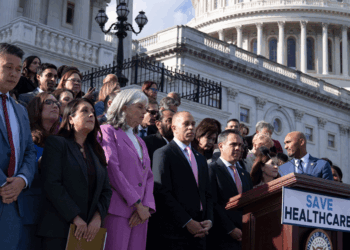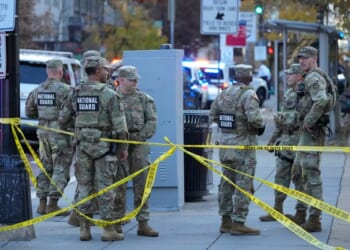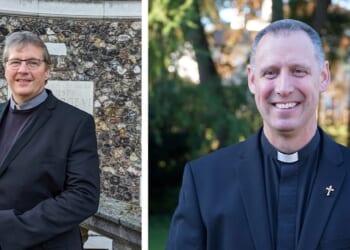Editor’s note: This is a lightly edited transcript of today’s video from Daily Signal Senior Contributor Victor Davis Hanson. Subscribe to our YouTube channel to see more of his videos.
Hello, this is Victor Davis Hanson for The Daily Signal. Here in California—which might be a model for other states as well—Gov. Gavin Newsom has now approved a formal commission to administer reparations to black Californians. And they’re trying not to use the word reparations since it has such a bad connotation. But it’s a bad idea in so many ways.
Remember, when California was admitted to the Union, it came in as a free state. It had no prior record of being a slave state. It has never been a slave state. It has no historical baggage as, perhaps, the former Confederacies. So, there’s no argument that people who happen to be in California are owed anything from it, by the state, of any race.
The second thing is we don’t know how many black Americans that are residents of California could trace their lineage back to California. In other words, do we really believe that most of the African Americans in California, who came after World War I and during World War II, have descendants that were suffering the fallout from slavery in California? It’s really absurd.
The third thing to remember is the black population of California is about 5.4% of the 41 million people. Who are going to be paying the reparations? The so-called white oppressor, victimizer class is only 42%. It is a minority. And many of them can trace their lineage back to the Oklahoma diaspora of the 1930s and ’40s, when they arrived here completely destitute.
And then, in addition, we have about 15% to 16% Asian. Some of them came from horrendous conditions in Vietnam. Some of them have families that were Japanese, have received money from the government as direct compensation for property they lost during World War II during the relocations. Some of them can argue that they were oppressed from the 19th century. Leland Stanford Jr., the president of the Southern Union Pacific Railroad, used Chinese labors in a very exploitive manner.
The point is that each particular minority group will then argue that they have claims on—whom? Who is going to be the victimizer class when the so-called white population is the minority?
Latinos are the majority population. They’re 45%. Are we going to ask people who migrated from Mexico, for the most part, to pay their tax dollars to African Americans who were not living here during slavery?
Who is black in a multiracial, intermarried culture? Are we going to go back to the Elizabeth Warren rule? Do we need DNA badges? Are we gonna use the old Confederate measure of one-sixteenth? Sixteen percent to 17% of the California population identify as multiracial. How do we know who is white, who is Hispanic, who is black? It’s very hard to adjudicate that.
More importantly, we have had repertory programs. And remember, we are 157 years from the 14th Amendment that guaranteed citizenship for former slaves. We’re 60 years from the EOP, affirmative action and sort of reparations program, of the Great Society that cost, in some computations, about $20 trillion of transfers. And that can include everything from special preferences on the basis of race for hiring, disproportionate impact in admissions to college, equal opportunity programs for small business, etc., etc.
So, there has been reparations, and many of them were race-based.
The final two considerations, very quickly, is California really had a $20 billion deficit. Gavin Newsom moved the money around and got by the mandatory requirement that California cannot borrow. But it basically cooked the books. It is in a perennial $20-$30 billion deficit crisis each year. This is a state that has the highest income taxes, the highest gas taxes, and among the highest property, not rates, but actual taxes, given valuations of homes, as well as high sales taxes.
So, what would be the answer? If you really do want to address inordinate crime rates among the black communities—72% of children are born to one family, a one-parent family; there’s an all-time high illegitimacy rate—then why not work with the black community leaders and suggest that the disintegration of the black family, the two-parent household, is primarily the cause, statistically, why blacks are not achieving the same economic status as, let’s say, Indian Americans or other Asian Americans, Arab Americans, or white Americans?
And that can be addressed. If you’re on the left, you can talk about structural racism. And if you’re on the right, you can say the Great Society programs incentivized the destruction of the black family.
Whatever the exegesis is, it’s a much better conversation to have than just, as in the past, to hand out billions of dollars to a group, who we don’t know, exactly, who composes it, we don’t know how one qualifies, we don’t know how long they can trace residency in California or if it even matters. And we know that California has had no history of slavery.
We publish a variety of perspectives. Nothing written here is to be construed as representing the views of The Daily Signal.

















